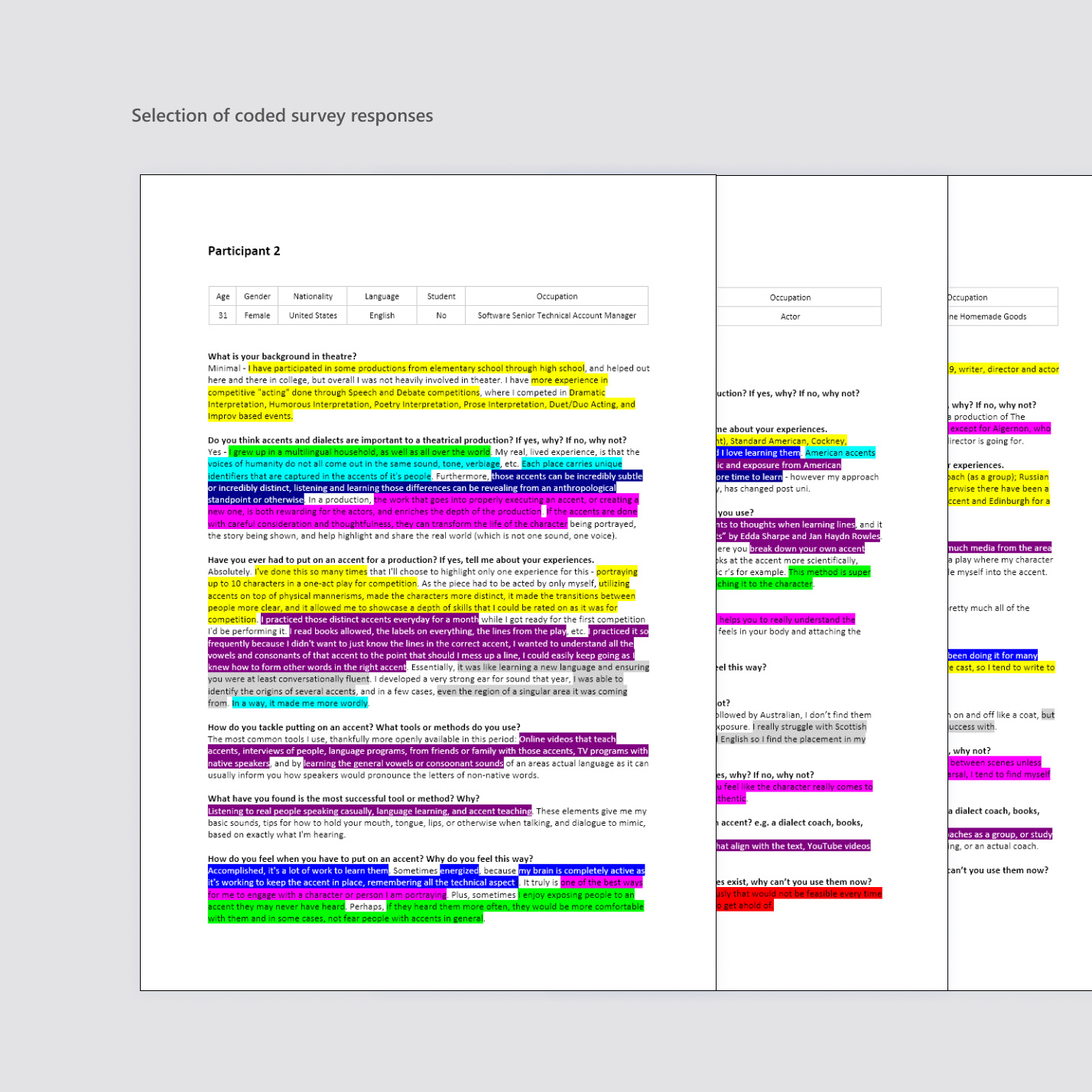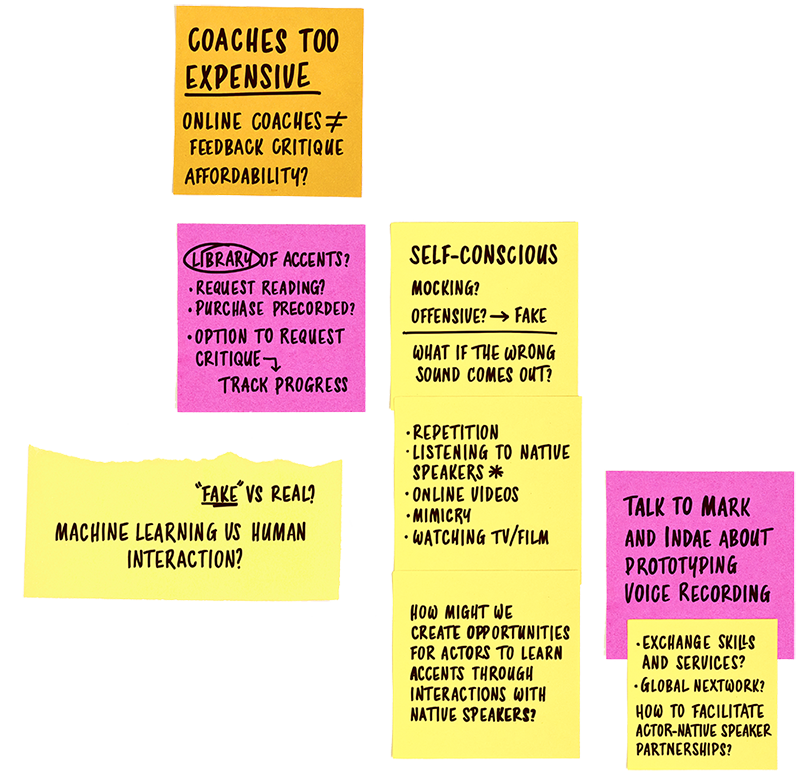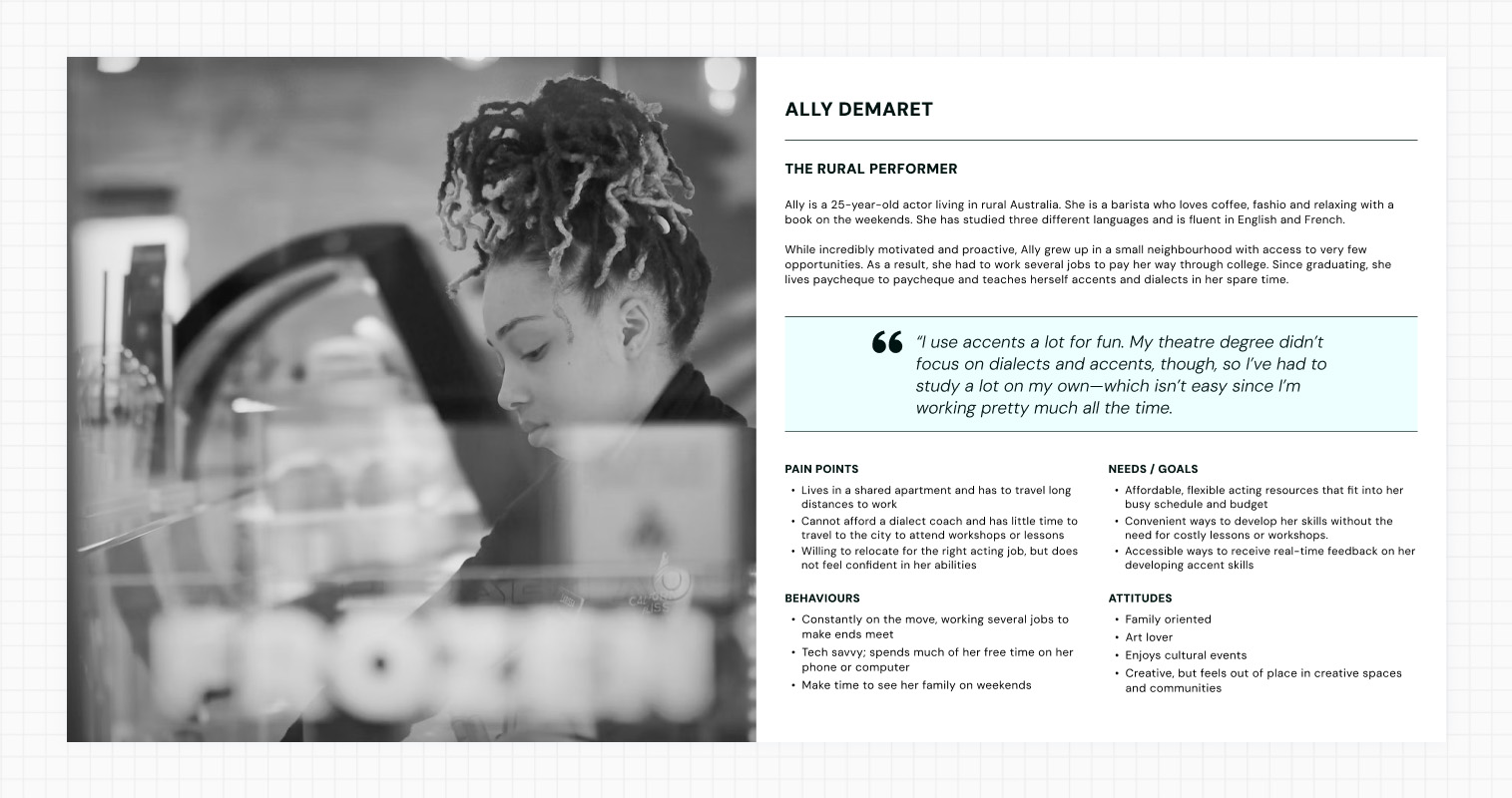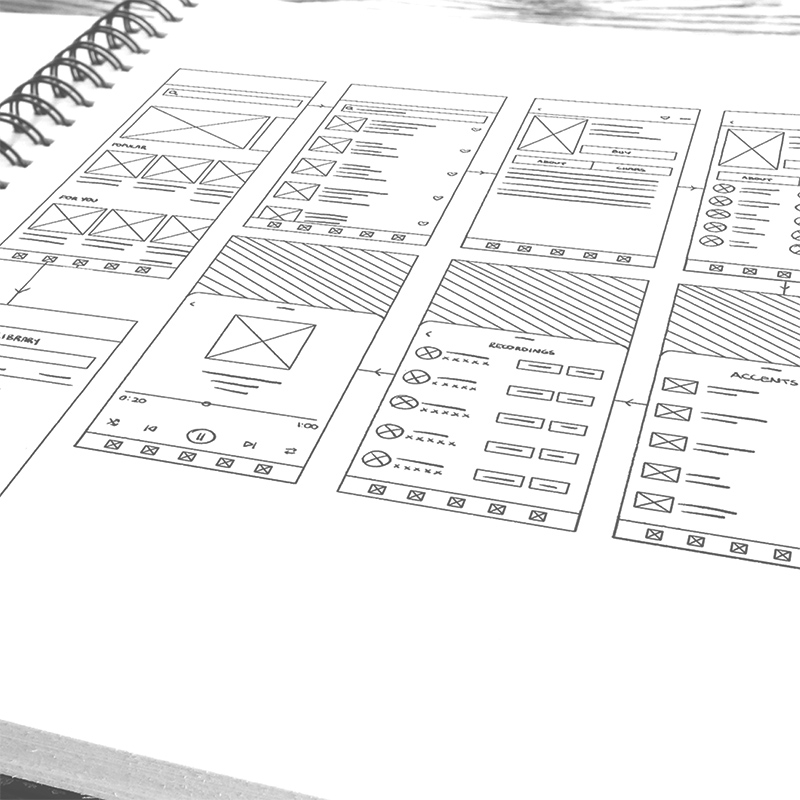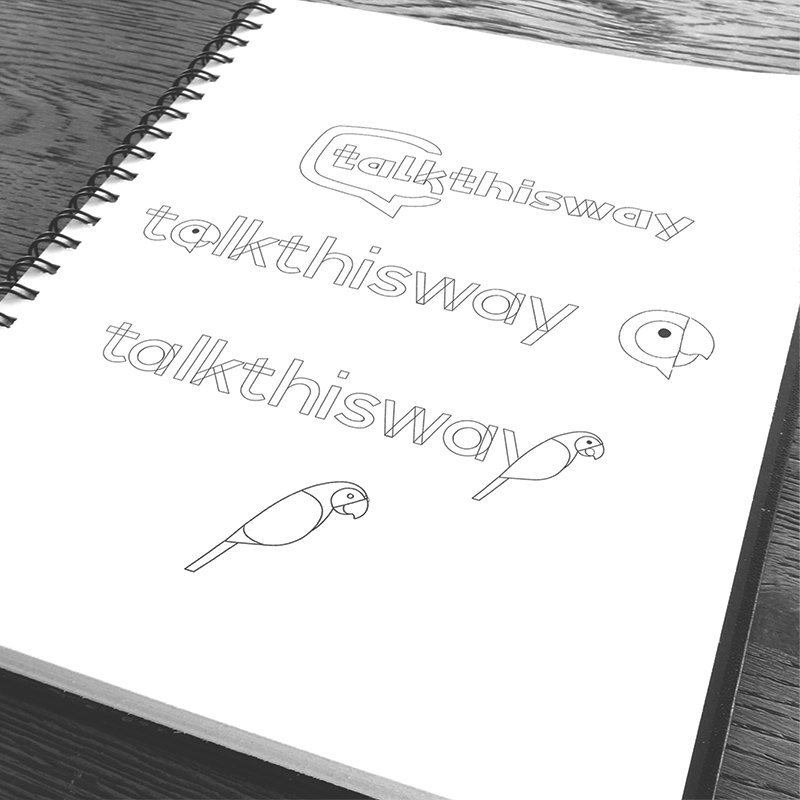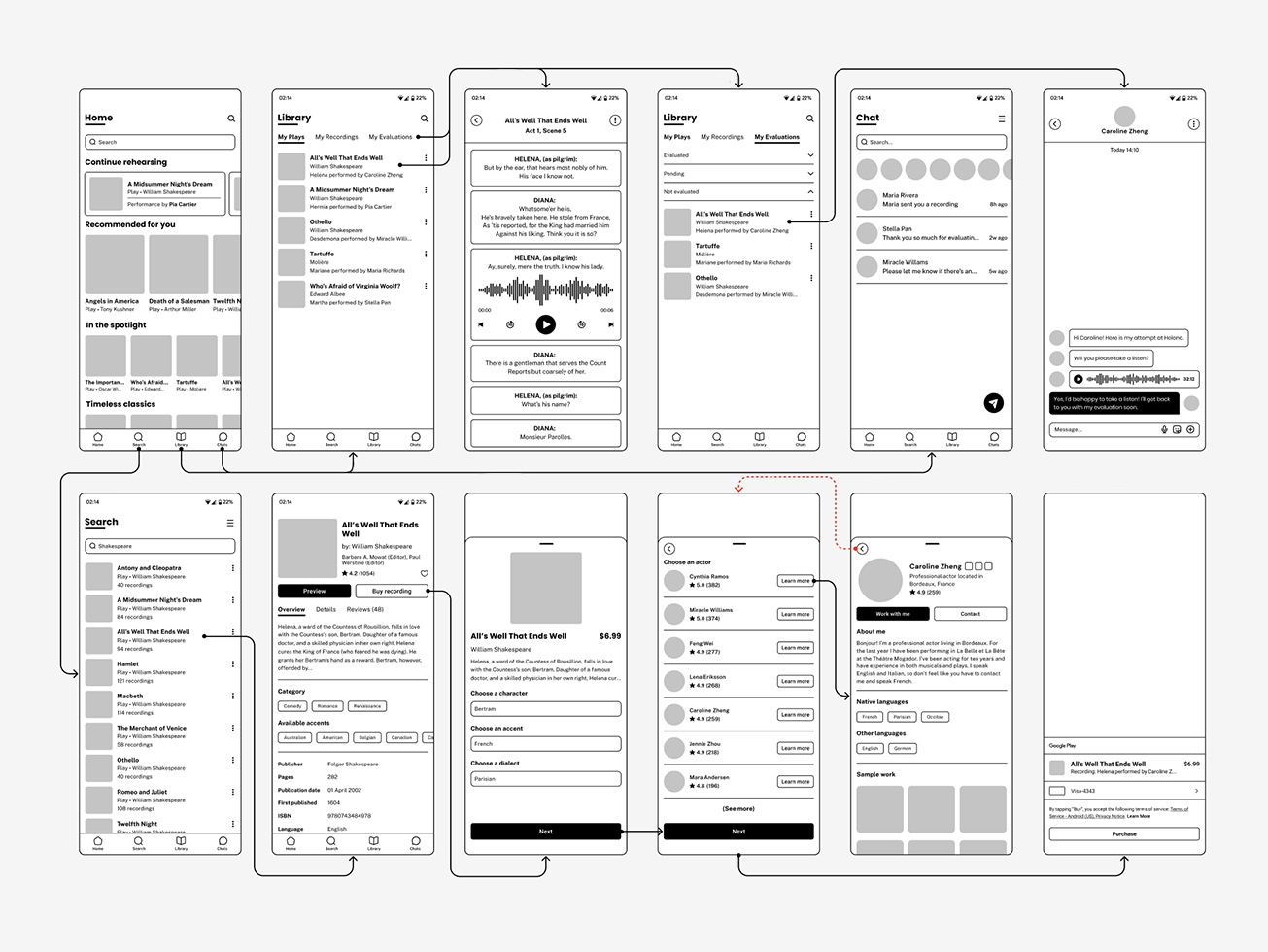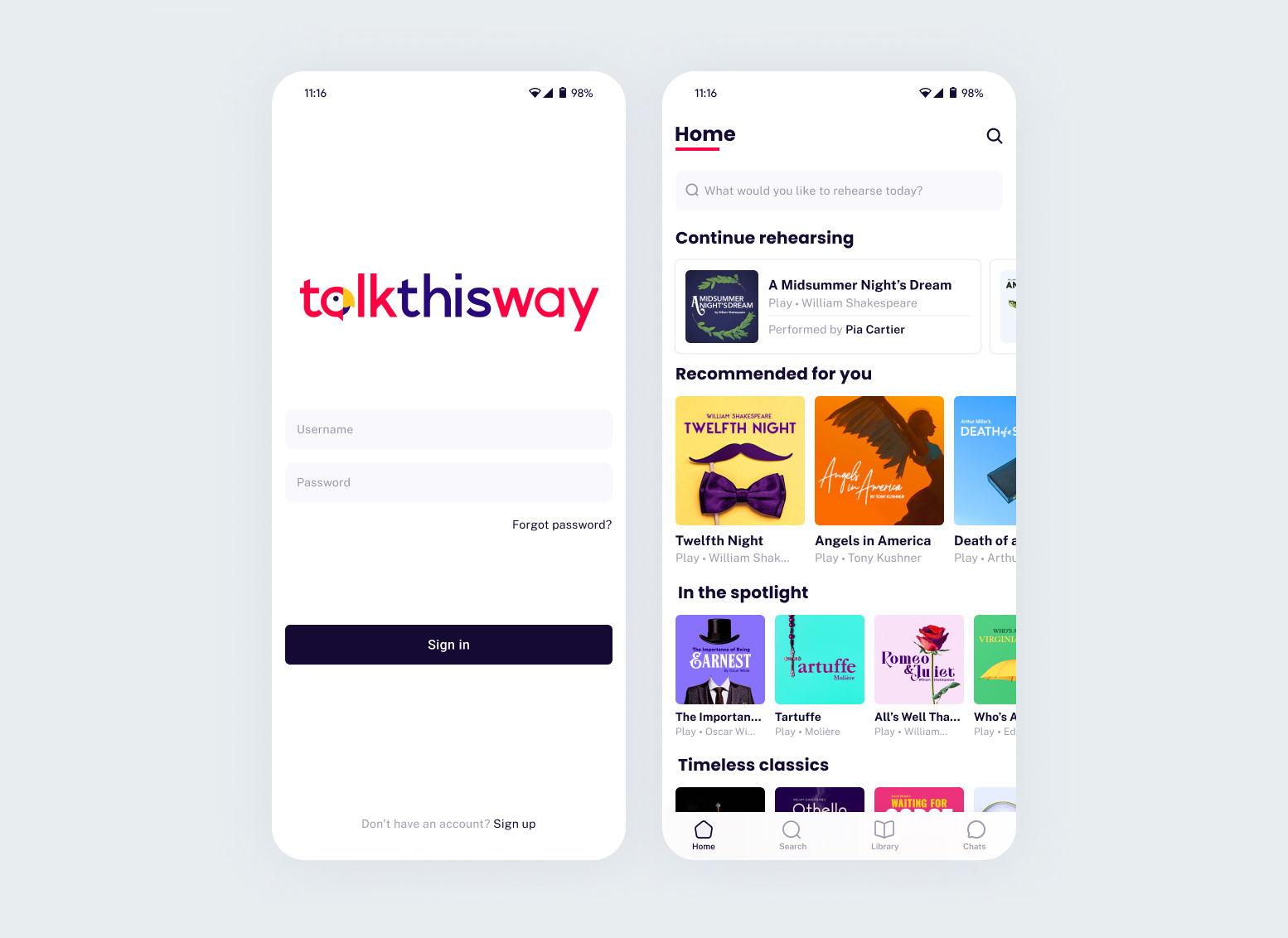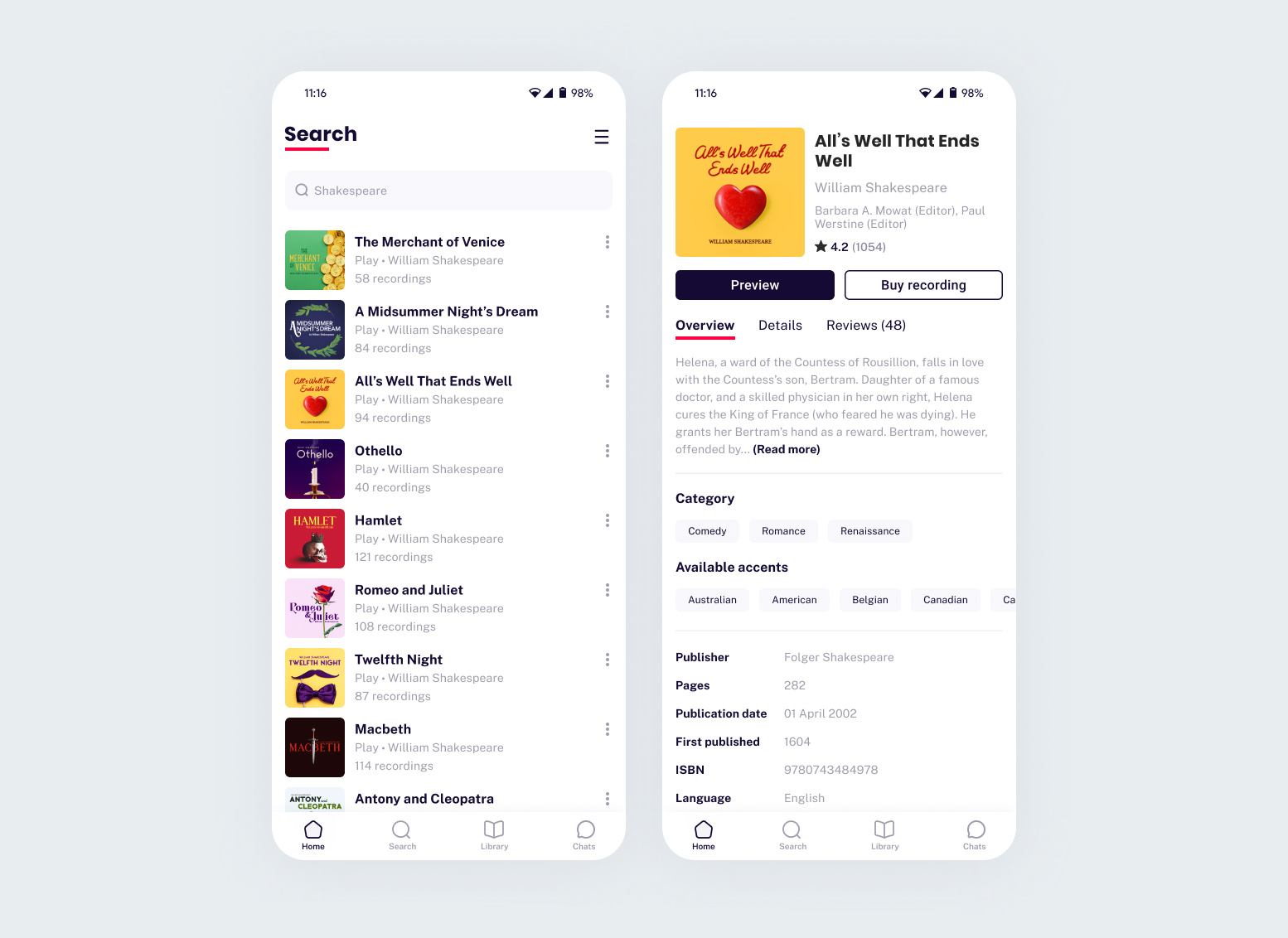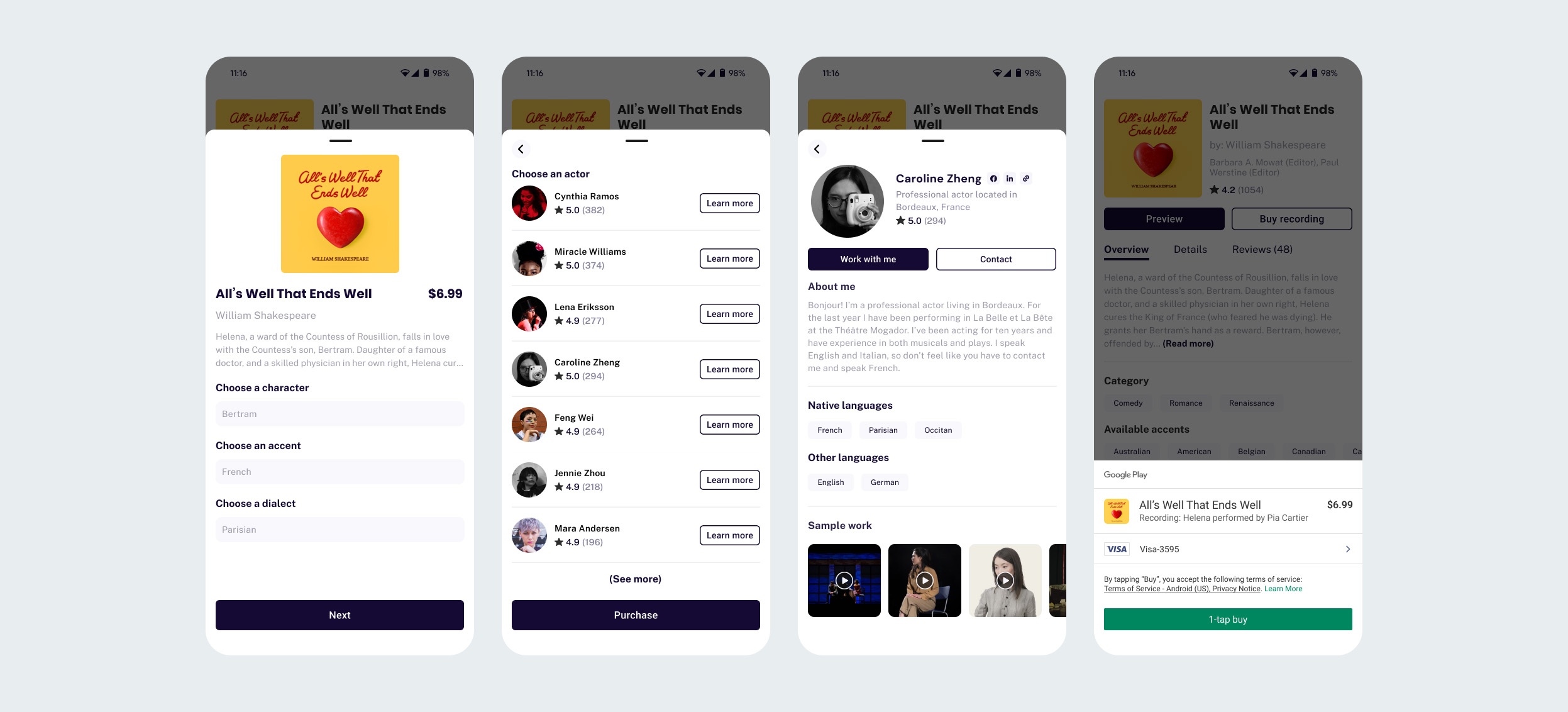Talk This Way
UX research · user testing · UI DESIGN
INTRODUCTION
For many actors, a convincing accent is essential. But professional dialect coaching is expensive and often inaccessible—particularly for aspiring actors. This project aimed to understand the challenges actors face when learning new accents and design a tool that offers affordable, constructive support.
THE PROBLEM
Learning an accent shouldn’t be a luxury
More often than not, a dialect coach can feel out of reach for an aspiring actor—both prohibitively expensive and limited in availability, particularly outside of major cities. The tools they do have access to offer some utility, but they’re not tailored to their individual experience and provide little support in measuring accuracy or progress over time.
With this project I seek to bridge the gap between cost and accessible coaching and provide actors with an affordable solution that supports them in learning a new accent regardless of their location or budget.
With this project I seek to bridge the gap between cost and accessible coaching and provide actors with an affordable solution that supports them in learning a new accent regardless of their location or budget.
UNDERSTANDING THE MARKET
Accent learning tools are rare and narrow in scope
My first step was to identify and analyse the competitive market. Research included keeping a field diary of use over a 7-day period as well as using the platforms to perform dummy tasks such as signing up, creating a profile, completing lessons, searching for content and AI coaching.
After entering all of my data into a spreadsheet, I noticed a significant gap in coaching services. While the market was flooded with apps focused on teaching English pronunciation and language skills, there were almost no platforms dedicated to helping users master a new accent.
After entering all of my data into a spreadsheet, I noticed a significant gap in coaching services. While the market was flooded with apps focused on teaching English pronunciation and language skills, there were almost no platforms dedicated to helping users master a new accent.
Screenshot of comparative analysis
MARKET INSIGHTS
Money talks
While some applications offered limited coaching for specific accents, only one provided a library. Each accent kit was priced at 10 AUD and included only the bare essentials: a few phrases, key words and recordings of native speakers.
God save the queen
3 out of 6 applications focused exclusively on English language and pronunciation, reflecting a common trend. Apps dedicated to accents beyond English were almost nonexistent, with only 1 app offering resources for more than 1 accent.
Video killed the radio star
3 out of 6 applications used videos as their primary education tool. The majority of these resources were clips of actors speaking in American English, with BritTea offering videos of actors speaking in a variety of British accents.
Paranoid android
With the exception of BritTea, no apps offered human coaching—only AI. Elsa Speak, ChatterFox and KeeWee all relied on machine learning and automated testing to assess users’ English pronunciation and provide feedback.
USER RESEARCH
Letting the actors takes center stage
To understand how actors learn new accents, I surveyed 50 amateur and professional performers aged 18–35 across 12 countries. Participants came from diverse cultural, socioeconomic and theatrical backgrounds, offering a wide range of perspectives and experiences.
RESEARCH INSIGHTS
Money, money, money
56 percent of participants stated that they would like a dialect coach to help them learn an accent or dialect, but few believed they could afford or locate one.
If perchance I have offended
One of the top 3 sources of stress for participants when learning a new accent was fear of imitating it in a way that might be perceived as offensive.
Gimme more
Almost 80 percent of participants claimed to use online resources when learning a new accent or dialect. While a handful felt like these were the only resources they needed, many wished more tools offered access to coaching or personalised feedback.
One is the loneliest number
Participants used a variety of accents in performances, ranging from RP English and American Midwestern to Roman and Castilian. This diversity highlights the need for tools and services focused on 1 accent to expand their offerings to better meet specific user needs.
SYNTHESISING INSIGHTS
Turning research into actionable insights
To make sense of my research, I mapped out key behaviours, goals and pain points using personas, empathy maps and storyboards. This helped identify clear patterns across my data: users needed accessible feedback, flexible ways to practise and encouragement that didn't depend on expensive coaching sessions.
EARLY DEVELOPMENT
No templates, no shortcuts
Because this application didn’t follow any existing models, early ideation took some time. With no direct precedent to build from, I had to rely on creative problem-solving to shape the user flow and experience from scratch.
I sketched wireframes to explore layout, interaction and structure. When it came to branding, I wanted something minimal but meaningful. Since the app helps users “mimic” speech, I designed a simple parrot mascot.
See sketches of my ideation process below
↓
↓
MID-FIDELITY WIREFRAMES
Once I established the core flow and structure, I moved into mid-fidelity wireframes to refine layout, hierarchy and functionality of my concept. These wireframes focused on the app’s key screens: searching for and purchasing a play, recording lines, listening back and receiving feedback.
From rough ideas to refined interactions
THE SOLUTION
A digital library of plays filled with authentic character recordings
Learning an accent is hard, but learning one without access to expensive but important tools can feel like an impossible task. To bridge the gap between cost and accessibility, Talk This Way aims to connect aspiring actors with professional actors all over the world.
Log in & Home screens
The Home screen is a personalised hub for users, showcasing their current rehearsal progress and navigation options. It also offers tailored play suggestions based on their interests alongside trending selections to inspire exploration.
Search & Purchases screens
The Search screen allows users to explore plays and characters. After selecting a play, they can choose their desired character, accent and dialect. From there, they can select an actor and purchase a recording.
Library screens
The Library screen provides users access to their purchased plays, personal recordings and evaluations. Users can choose Listen or Rehearse from a play's information screen to begin listening to and reciting their chosen character's lines.
Rehearsal screens
The Rehearsal screen is where users can listen to and record individual lines. To record, users can hold a line until the play button appears. To save a recording, they can swipe right, or to re-record, they can swipe left
Evaluation and Chat screens
The Evaluation and Chat screens allow users to request feedback from performers on their progress. After purchasing character lines, the performer is automatically added to the user’s contact list. Users can then select an unevaluated play, send their recording for review and receive personalised audio feedback through the chat window.
LOOKING AHEAD
What makes Talk This Way so exciting is that there is nothing else like it on the market, which opens up a world of possibilities
One area worth exploring further is the performer portal. With more time, I would have conducted interviews with performers to understand what matters most to them—whether it’s income, visibility, community or creative opportunities. These insights would help shape a portal that not only functions well as a management tool but also genuinely supports performers’ goals.
There is also the potential to integrate machine and deep learning technologies. These could provide real-time analysis of pronunciation, tone and intonation, allowing the app to deliver personalised, adaptive feedback. Community features—like discussion boards or peer forums—could further enhance the experience, giving users a space to connect, share and support one another.

